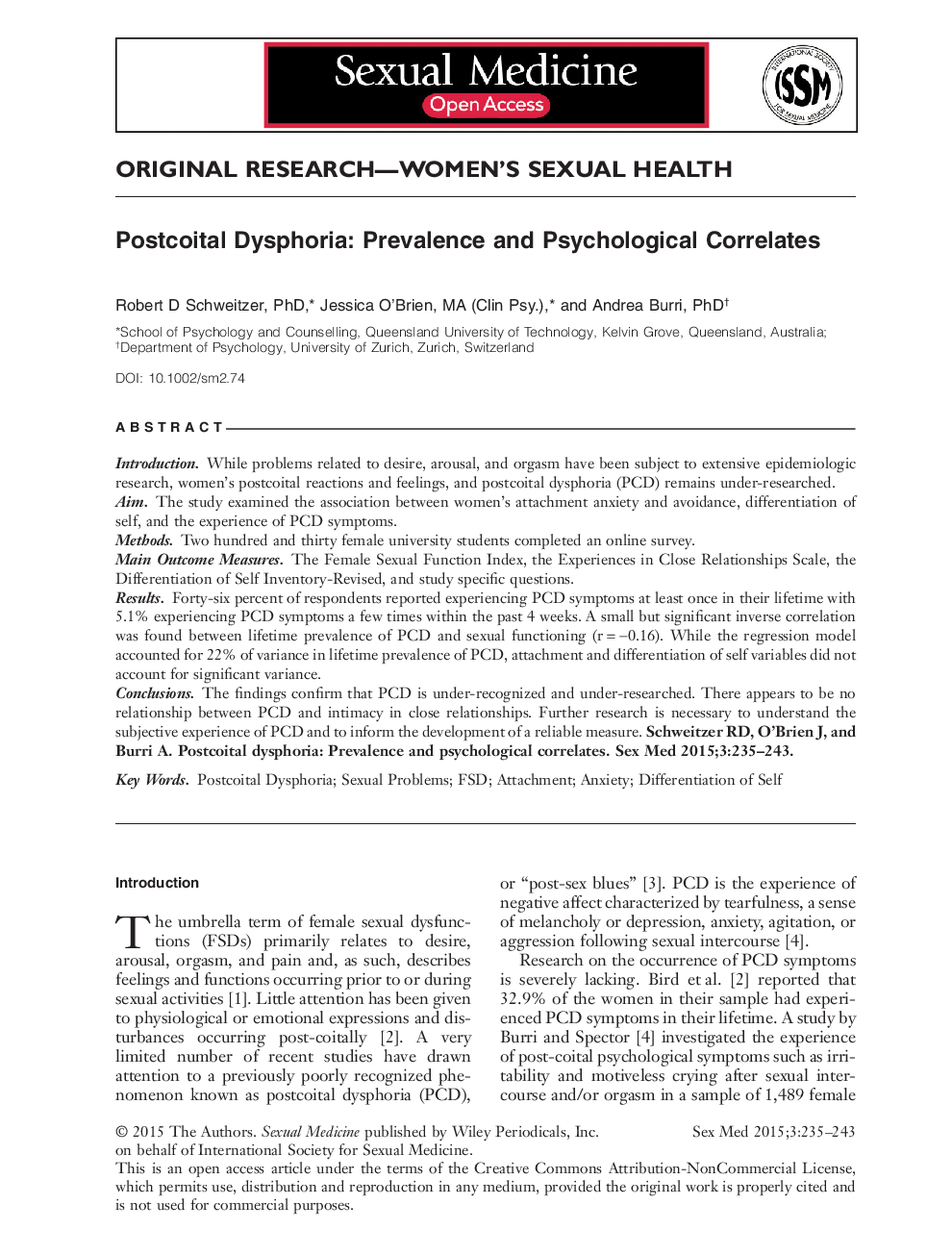| کد مقاله | کد نشریه | سال انتشار | مقاله انگلیسی | نسخه تمام متن |
|---|---|---|---|---|
| 4274497 | 1285267 | 2015 | 9 صفحه PDF | دانلود رایگان |

IntroductionWhile problems related to desire, arousal, and orgasm have been subject to extensive epidemiologic research, women's postcoital reactions and feelings, and postcoital dysphoria (PCD) remains under‐researched.AimThe study examined the association between women's attachment anxiety and avoidance, differentiation of self, and the experience of PCD symptoms.MethodsTwo hundred and thirty female university students completed an online survey.Main Outcome MeasuresThe Female Sexual Function Index, the Experiences in Close Relationships Scale, the Differentiation of Self Inventory‐Revised, and study specific questions.ResultsForty‐six percent of respondents reported experiencing PCD symptoms at least once in their lifetime with 5.1% experiencing PCD symptoms a few times within the past 4 weeks. A small but significant inverse correlation was found between lifetime prevalence of PCD and sexual functioning (r = −0.16). While the regression model accounted for 22% of variance in lifetime prevalence of PCD, attachment and differentiation of self variables did not account for significant variance.ConclusionsThe findings confirm that PCD is under‐recognized and under‐researched. There appears to be no relationship between PCD and intimacy in close relationships. Further research is necessary to understand the subjective experience of PCD and to inform the development of a reliable measure. Schweitzer RD, O'Brien J, and Burri A. Postcoital dysphoria: Prevalence and psychological correlates. Sex Med 2015;3:229–237.
Journal: Sexual Medicine - Volume 3, Issue 4, December 2015, Pages 235–243